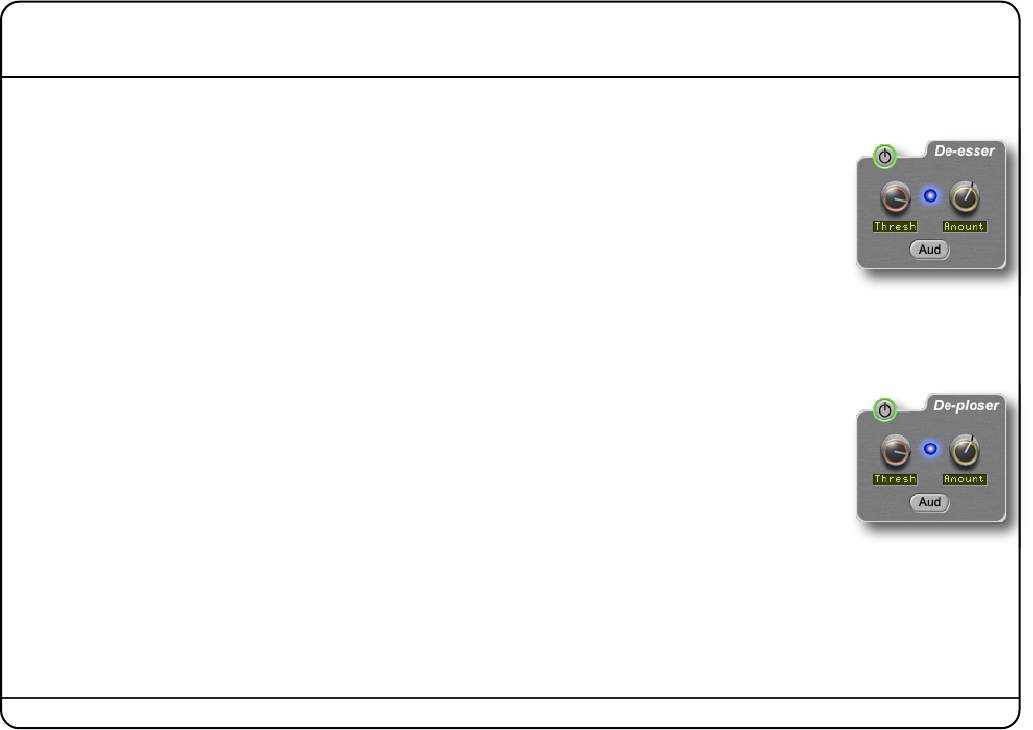
Page 8
4. Vocalstrip In Detail
4.1 De-esser
Sibilance is a resonance often found in vocal recordings which can cause undesirable distortion
artefacts which sounds like the ‘S’ constants are overly high in level. The De-esser in Vocalstrip
intelligently detects these sounds and gives you control over how much attenuation to apply.
The blue indicator between the controls ‘glows’ to show that the de-esser is working. The
Thresh (threshold) control sets the relative detection point, so that the de-esser can distinguish
between ‘S’ and ‘non-S’ sounds. Pressing the Aud button enables a solo mode where you hear
only what is being taken out. This can be used effectively with the Thresh control to ensure
you are only processing the correct portion of the signal.
4.2 De-ploser
Plosives can ruin a good vocal take as they cause a burst of low frequency energy in the signal
which can not only sound unpleasant, but use valuable headroom and can cause dynamic
processors to behave in an undesirable manner. Plosives are often caused by an excess of
wind noise whilst recording which can occur if the singer is standing too close to the
microphone. They can also be caused by compressor overshoot. The VocalStrip De-ploser
detects these artefacts and lets you manage their level. Similar to the De-esser, it also features
Thresh (threshold) and Amount controls and an Aud (audition) mode. Again, the blue indicator
between the controls shows action.


















